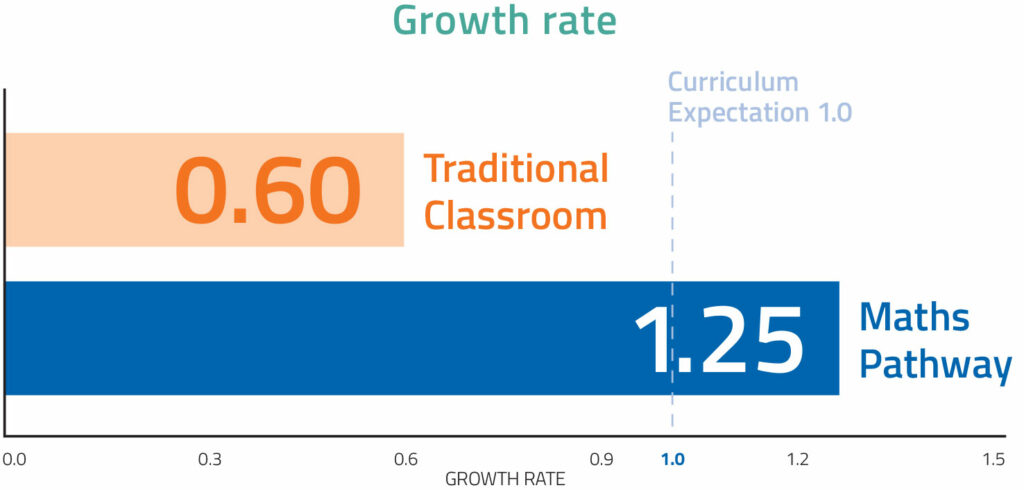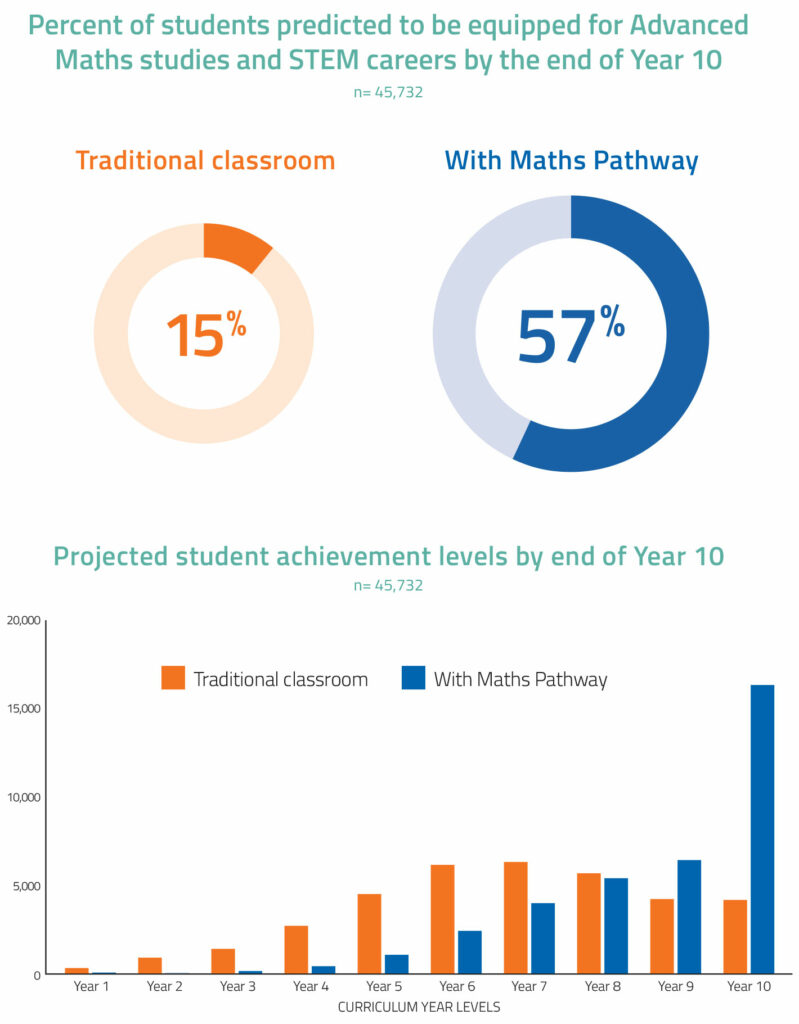Reaching the end of Year 6 is an important milestone. It represents seven years of learning, all leading to the big step from primary to high school.
In theory, it should also be the point at which students have mastered all of the mathematics curriculum they have covered as a primary student. But that would be a pretty outstanding accomplishment and one that very few students achieve.
The reality is that when students finish Year 6 they do so with gaps in their mathematical understanding. Data shows that a typical Year 7 classroom has an eight-year spread of ability. Research supports this, showing that students in their first year of high school range from those barely able to count, to others who have are ready for content beyond their aged-based class.
We’ve all heard Sal Khan’s analogy; you can’t build a house without a strong foundation and the same goes for maths learning. Yet every year students are shepherded into aged-based classes to learn aged-based content. When we teach, we have to move students along, term after term, year after year. Regardless of whether they’ve master the content or even made any progress at all. Not because we want to, of course. But because that’s the way it works.
When gaps grow, students fall behind
Teachers know that students learn maths on a continuum. Students must understand one concept before they can move on to the next. Because if they don’t master the foundations, learning new concepts further along can be very difficult or even impossible. This is becoming a real problem in Australia. Our results in national and international tests are showing a decline in numeracy proficiency. Most students who achieve low numeracy scores in Year 3 never catch up to their classmates, falling even further behind by Year 9.
Maths Pathway data also shows that traditional ways of teaching maths will see an average of just 9% of students reaching or exceeding the expected curriculum standard for their year level. This means that by the time these students enter Year 10, the vast majority are unprepared to continue their studies in maths related fields.
Further data from Australia’s 2012 PISA results show that 20% of Australian 15 year-olds fell short of PISA’s minimum proficient standard (Level 2), compared to only 9% of students in the world’s five best-performing education systems. The types of opportunities that students have in the workforce are directly linked to the competencies they have at age 15.
With more and more students falling behind, it’s time to reconsider how we teach maths. We need to move away from our focus on student achievement levels and instead look at how each individual student is progressing through their own learning journey, regardless of the level they start from.
When we focus on progress we give students the time to work through content at their own pace, mastering concepts as they go. Mastery becomes the fixed component in this approach, while time is variable — the reverse of how we teach now. This is what creates a solid foundation of maths knowledge, one that will stay with students for life.
Targeting your teaching
Ask any teacher, and they’re likely to tell you that they want to deliver personalised learning to every student that they teach. Targeted teaching makes sense and there’s plenty of research that backs its benefits. However, limited systems, technology and professional learning mean that incorporating truly differentiated learning in the classroom is a time-consuming and complex process. A process that’s almost impossible to implement as it requires so much ongoing admin that often it leaves teachers with even less time to teach.
Our Learning and Teaching model that’s overcoming these challenges, supporting teachers to provide truly differentiated learning, without the additional admin.
The model uses advanced diagnostics and ongoing formative assessments to provide granular data on each student’s gaps and competencies. By identifying each student’s learning profile — what they have mastered, what they are ready to learn next, and what gaps may exist — Maths Pathway gives students the curriculum-mapped content they are ready to learn.
This ensures students work within their Zone of Proximal Development, being challenged enough to remain engaged but given plenty of opportunity to experience success. Top achieving students can move beyond the restrictions of aged-based content and students who have previously struggled can master the maths they’re ready for.
Teaching using the model increases their impact too. Access to real-time data allows teachers to identify and group students with similar needs and deliver impactful, stimulating, and personalised instruction. Lessons are conducted with small groups of students who have a similar understanding of a key concept within a module or have comparable learning needs, allowing them to problem-solve, ask questions and think critically.
Closing the gaps
Results from Maths Pathway schools show that this approach to teaching and learning is working. On average, students using the model learn double the amount of maths in a year than they would in a traditional classroom.

Students using the program are also increasing their trajectories for Year 10. This is important as it provides an indicator of what mathematics and STEM-related pathways they will be able to access and how numerate they will be throughout their lives. In the traditional classroom, it is estimated that only 15% of Year 7 students will reach the required curriculum level of 9 on completion of Year 10. Using the Maths Pathway model, this number increases dramatically.

Better results in Year 10 also mean that more students are equipped to study maths in senior high school and beyond. 57% of Maths Pathway students will reach the levels required to progress to Advanced Maths, compared to only 15% in a traditional classroom. At Lavalla Catholic College, teachers report a 25% increase in enrolments in Maths Methods among students who’ve been using Maths Pathway since Year 7.
These results show that it is possible to close learning gaps and change the trajectory of student outcomes. Regardless of where they start from, Maths Pathway can help teachers develop numerate students who will have the skills they need to tackle the workforce of the future.
